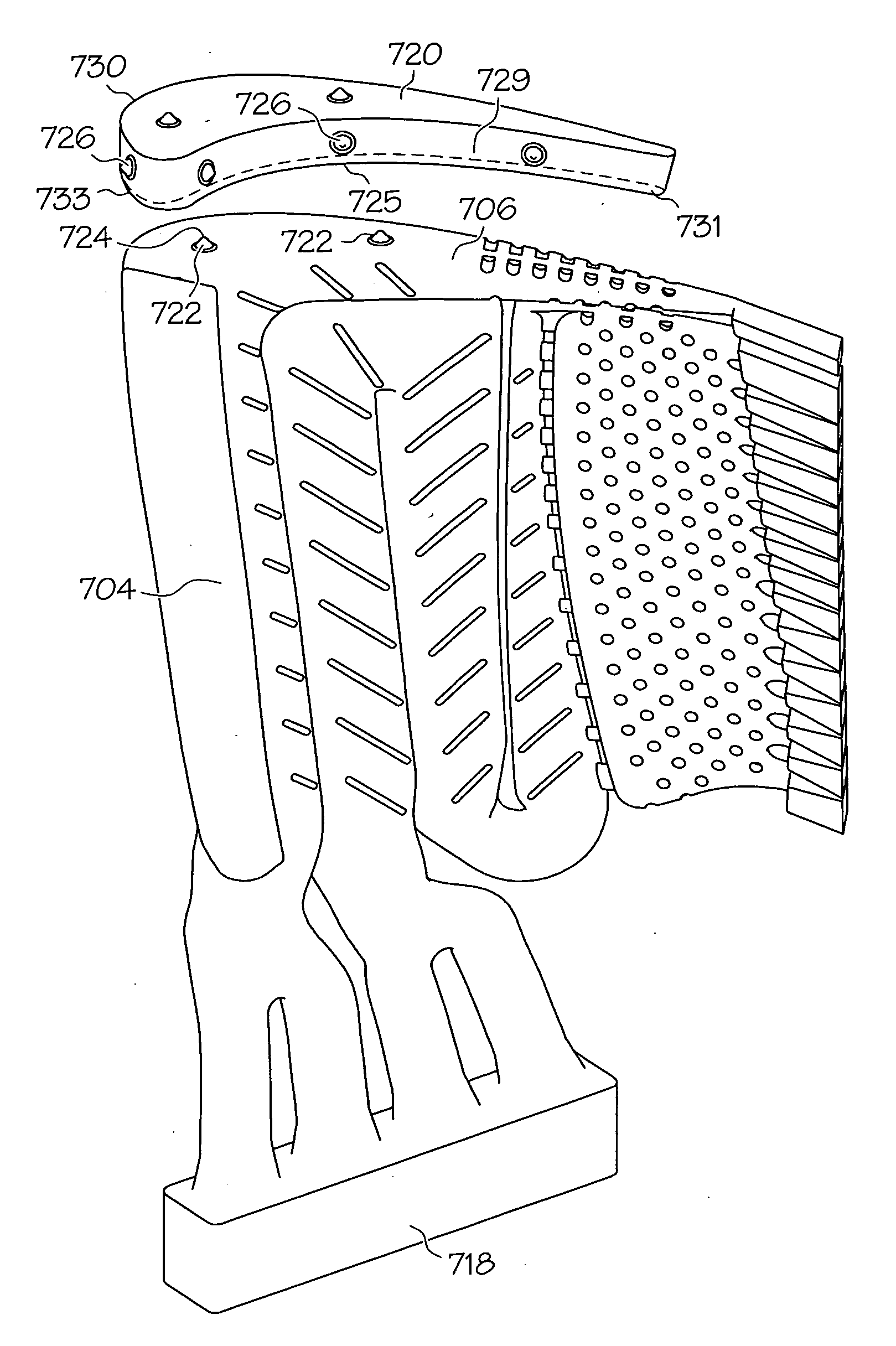Cooled turbine blade cast tip recess
a cooling turbine and tip recess technology, applied in the field of turbine blades, can solve the problems of reducing the structural integrity of the blade, the design of the internal cooling circuit has become more complex, and the above-described blades have drawbacks
- Summary
- Abstract
- Description
- Claims
- Application Information
AI Technical Summary
Benefits of technology
Problems solved by technology
Method used
Image
Examples
Embodiment Construction
[0023]The following detailed description of the inventive subject matter is merely exemplary in nature and is not intended to limit the inventive subject matter or the application and uses of the inventive subject matter. Furthermore, there is no intention to be bound by any theory presented in the preceding background or the following detailed description.
[0024]FIGS. 1 and 2 illustrate an exemplary aircraft jet engine turbine rotor blade 100 that includes a shank 102, an airfoil 104, a platform 106 and a root 108. The platform 106 is configured to radially contain turbine airflow. The root 108 provides an area in which a firtree 109 is machined. The firtree 109 is used to attach the blade 100 to a turbine rotor disc (not illustrated). It will be appreciated that in other embodiments, any one of numerous other shapes suitable for attaching the blade 100 to the turbine disk, may be alternatively machined therein. The airfoil 104 has a concave outer wall 110 and a convex outer wall 11...
PUM
| Property | Measurement | Unit |
|---|---|---|
| distance | aaaaa | aaaaa |
| melting point | aaaaa | aaaaa |
| height | aaaaa | aaaaa |
Abstract
Description
Claims
Application Information
 Login to View More
Login to View More - R&D
- Intellectual Property
- Life Sciences
- Materials
- Tech Scout
- Unparalleled Data Quality
- Higher Quality Content
- 60% Fewer Hallucinations
Browse by: Latest US Patents, China's latest patents, Technical Efficacy Thesaurus, Application Domain, Technology Topic, Popular Technical Reports.
© 2025 PatSnap. All rights reserved.Legal|Privacy policy|Modern Slavery Act Transparency Statement|Sitemap|About US| Contact US: help@patsnap.com



